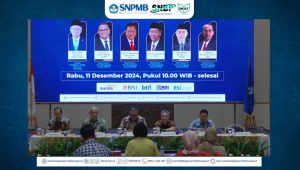Parturition Premature Imminent (PPI) or the threat of premature birth is the presence of uterine contractions accompanied by cervical changes in the form of dilatation and effacement before 37 weeks of gestation and can cause premature birth. Premature birth is a problem with a high prevalence in the world and is a challenge for doctors, especially obstetricians, to find out the causes and prevention of premature birth. The main problem with premature birth is the lack of success in its management.
ACOG defines preterm birth as delivery that occurs between the gestational age of more than 20 weeks and less than 37 weeks from the first day of the last menstrual period. The POGI Geomaterial Medical Association in Semarang in 2005 determined that preterm labour is delivery that occurs at 22-37 weeks of gestation. According to Wibowo (1997), preterm labour is regular uterine contractions after 20 weeks of gestation and before 37 weeks, with contraction intervals of 5 to 8 minutes or less and accompanied by one or more of the following signs: (1) progressive cervical changes (2) cervical dilation of 2 centimetres or more (3) cervical effacement 80 percent or more.
Preterm delivery is defined as delivery that occurs at less than 37 weeks’ gestation after being considered viable. Preterm labour can be caused by maternal, fatal, paternal, environmental, and genetic factors. The mechanism of preterm labour is no different from term delivery. Prediction of preterm labour can be done by examining cervical length with transvaginal ultrasonography, fatal fibronectin, and IGF binding protein-1 or placental alphamicroglobulin-1 (PAMG-1). In infants born prematurely, the morbidity and mortality rates increase due to the immaturity of the body’s organs, especially in infants born weighing
Discussion
The mechanism of preterm labour is not different from that of term labour, namely uterine contractility, cervical ripening, and membrane rupture. The fundamental difference is that the activation process in term labour is part of the physiological activation, whereas in preterm labour it is pathological. The usual path of delivery can be seen based on anatomy, biochemistry, immunology, endocrinology, and clinical symptoms. Activation of uterine components can be synchronous and asynchronous. Synchronous activation will lead to spontaneous preterm labour; whereas asynchronous activation gives rise to different phenotypes. For example, membrane activation causes preterm PROM, cervical activation causes cervical insufficiency, and myometrial activation causes preterm uterine contractions.
Aetiology and Risk Factors divided into 2, namely, Iatrogenic consist of Mother’s condition, as Severe preeclampsia and eclampsia, Antepartum haemorrhage (placenta previa and placental abruption), Chorioamnionitis and Severe heart disease or severe lung/kidney disease. Second, Fatal state are Fatal distress. (anaemia, hypoxia, acidosis or fatal heart failure), Intrauterine infection, Fatal growth retardation (IUGR), Rhesus isoimmunization. Cord entanglement in monochorionic twins (van der Burg B dan van der Saag 1996).
Spontaneous happen due to many risk factors, as Idiopathic, Pregnancy history (prematurity, premature rupture of membranes), The distance between pregnancies is too close, Premature rupture of membranes, Cervical incompetence, Placental insufficiency, Uterine overdistention and Pregnant with twins. Trimester bleeding, Uterine abnormalities, Trauma, Medical disease as Hypertension, SLE, Restrictive lung disease, Hyperthyroid, DM, Heart and kidney disease, Hydramnios, and Congenital abnormalities. Other factors such as Low socioeconomic, Smoke, Infection, Poor antenatal care is also risk factor for PPI.
Conclusion
In general, the management of preterm labour includes the administration of a single dose of corticosteroid in women 24-34 weeks’ gestation with a risk of delivery within 7 days. In addition, magnesium sulphate can reduce the severity and risk of cerebral palsy in infants when born before 32 weeks of gestation. First-line tocolytics such as beta adrenergic agonists, calcium channel blockers, NSAIDs can be given for prolongation of pregnancy up to 48 hours.
Author: Nanda Rachmad Putra Gofur
Detailed information on this research can be viewed on our journal at: https://ijrp.org/paper-detail/2704
Nanda Rachmad Putra Gofur, Aisyah Rachmadani Putri Gofur, Soesilaningtyas, Rizki Nur Rachman Putra Gofur, Mega Kahdina (2022) Parturition premature imminens management : A Review Article. IJRP 2022, 93(1), 91-96; doi:.10.47119/IJRP100931120222756








